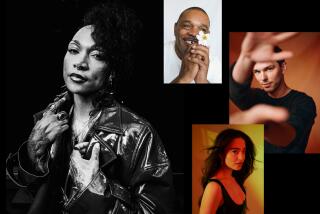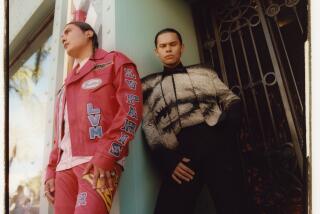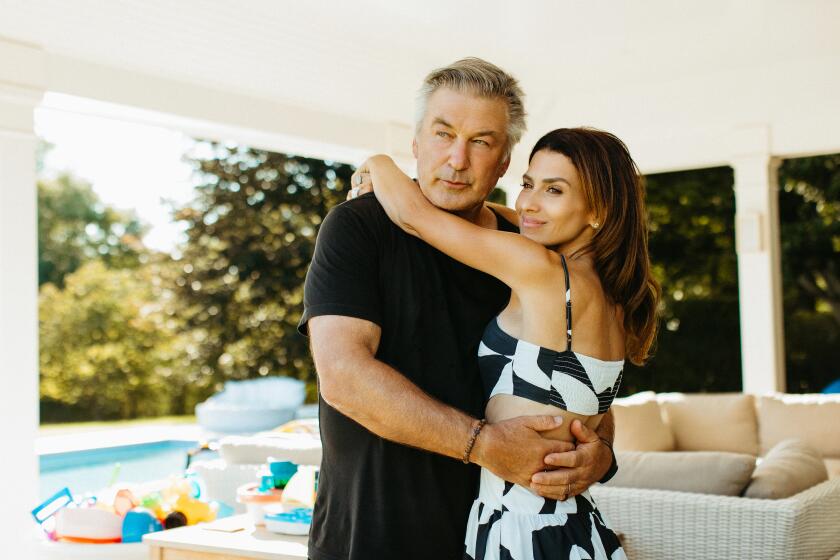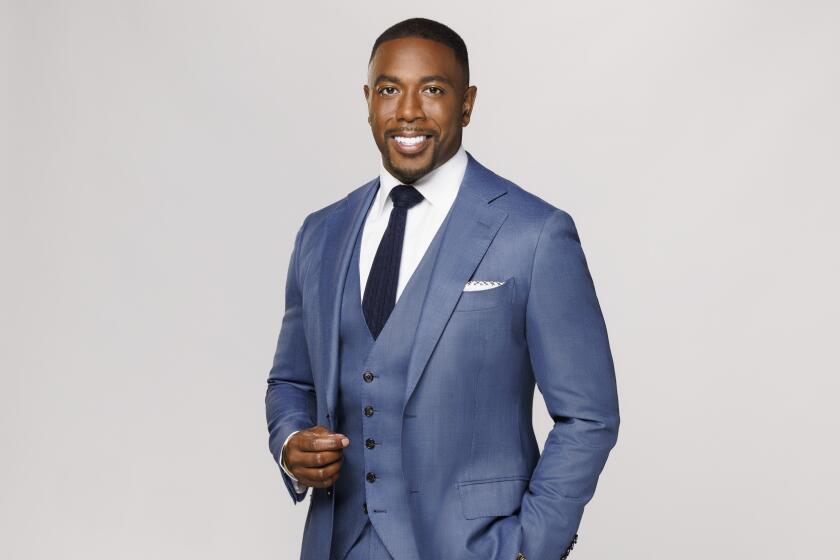G. Ray Hawkins, gallerist who championed photography as fine art, dies at 80

- Share via
When G. Ray Hawkins opened the first public gallery in Los Angeles devoted to photography in 1975, the financial rewards were unremarkable. Even names that defined fine art photography drew humble prices.
Ansel Adams’ famous nighttime landscape “Moonrise, Hernandez, New Mexico” typically sold for about $600 then, and that was at the higher end of the scale. “I remember when we sold a Cartier-Bresson for $350 — it was a big celebration,” recalls David Fahey, who worked with Hawkins for a decade before creating his own Fahey/Klein Gallery in 1986. “It was a big deal.”
Soon after that, the G. Ray Hawkins Gallery, located then on fashionable Melrose Avenue, sold another print of “Moonrise” for $1,000. Just a few years later, Hawkins sold an Adams mural for $81,000, a record at the time, says Fahey.
“People really made fun of the whole idea of a photograph selling for as much as a thousand dollars, and it was like a joke,” Fahey adds. “It’s hard to believe, but not that long ago people just did not accept fine photography as an art form.”
One reason photography is widely valued by collectors and galleries today is from the early efforts of Hawkins, who died Dec. 11 at age 80 from an undisclosed illness. When he began, a market for art photography was already developing on the East Coast, with museum shows and auction houses dealing in pictures by the mid-1970s. And although there was meaningful gallery activity in San Francisco, there was no public venue for photography in Los Angeles prior to Hawkins.
“I realized a whole new field was taking shape nobody knew anything about,” Hawkins told The Times in 1995. “At that point, there were maybe 25 dealers in the country who handled photography, but they only did it as a sideline. Here was something nobody had done before.”
At a startup cost of about $40,000, Hawkins opened the gallery with his first wife and co-founder, Randee Klein (later a partner at Fahey/Klein). His first photo exhibition was from Man Ray, the acclaimed surrealist and Dadaist who moved easily across a variety of mediums.
“We opened with Man Ray because people resisted taking photography seriously as art then, so we needed an opening exhibition nobody could dismiss,” Hawkins explained to The Times. “Our second show was Edward Curtis, the third was James Van Der Zee, and in six months we were out of the red.”
Hawkins secured his most significant acquisition in 1976, when he discovered a previously thought destroyed cache of photographs and glass negatives for color images created by Paul Outerbridge. Hawkins purchased the collection, including copyrights, from Outerbridge’s widow, Lois. And the gallery regularly hosted work by many of the leading creators of the form: Richard Avedon, Francesco Scavullo, Helmut Newton, Robert Mapplethorpe, Irving Penn, Herb Ritts, Edward Steichen, Annie Leibovitz, W. Eugene Smith and Walker Evans.

Even major names like Avedon and Penn, who had previously shown on the East Coast, had never before had a Los Angeles exhibition before Hawkins hosted them.
“It got the community going,” says photographer Jo Ann Callis, who enjoyed an early exhibition at the Hawkins Gallery in 1978, and is now in collections at the Museum of Modern Art in New York and the L.A. County Museum of Art. She was also deeply inspired by the Outerbridge works she saw there for the first time. “G. Ray liked a lot of different things, and I think he had a sense of what he could sell. … He had an energy for trying to make things happen, stirring up some interest. He deserves a lot of credit for that.”
Greg Gorman, whose photography was featured in multiple shows at the gallery, stresses its vital role in the local arts scene. “For all of us, it was a place to have an exhibition in your hometown in a prestigious gallery, which was very important,” he says. “It certainly added to our credibility as artists.”
The bigger names typically drew overflow crowds, as Hawkins, tall and bearded, presided over the openings. On Melrose, where Hawkins’ gallery was for a time across the street from the studio of photographer Max Yavno, the gallery owner also had a surprising gift for auctioning artwork, says collector Manfred Heiting, recalling a simpler time of acquiring photography.
“When we collected, we just needed our passion and our weekly money. Today, when you want to buy a photograph, you need an expert to advise you. And you need a lawyer and a banker,” Heiting says with a laugh. You would not get all the information about respective photos that you typically would today: “What is the provenance, how many of it was made? No, it was just you bought a print for $300.”
Susan Hawkins, the gallery owner’s second wife, adds, “G. Ray loved collectors as much as he loved artists, and he loved helping to build collections. He just loved the medium, and it was all about joy.”
By 1990, Hawkins had moved the gallery to Colorado Boulevard in Santa Monica. The gallery was also a place to showcase the evolution of the medium, as when collector and photographer Graham Nash — best known as a rock musician with Crosby, Stills & Nash — introduced a then-new process of digitally scanned images on inkjet prints under his Nash Editions banner in 1991.
Looking back, Nash said in an email that he remembered Hawkins “as having a ‘good eye’ for images and had a good sense of humor.”
The G. Ray Hawkins Gallery had lasting impact in other ways, acting as a launchpad for several future gallerists, curators and photographers. Aside from Fahey, others who worked at the Hawkins gallery included Jan Kesner, later an L.A. photography dealer and gallery owner; and the accomplished editorial and gallery photographer Lauren Greenfield, who was once an intern.
Pop star Graham Nash sold his collection of photographs for $2.4 million on Wednesday at Sotheby’s, setting an auction record for a single collection of photos.
Born George Ray Hawkins in Hammond, Ind., on June 7, 1944, Hawkins joined the Navy after high school and was sent to photography training in Pensacola, Fla., and became an aerial photographer and newsreel cameraman. After his tour of duty, Hawkins worked his way down the West Coast with his older brother, Jerry, stopping for a time in Haight-Ashbury, playing guitar on the corner and selling collectibles. Hawkins then came to L.A. in 1967, and studied at Santa Monica City College before transferring to the UCLA film department, where he studied directing.

While at UCLA, Hawkins took a photography course taught by artist-photographer Robert Heinecken. Hawkins initially opened the gallery to fund his planned feature-length thesis film project but got hooked on the life of a gallery owner and spreading his love for the medium.
After his first marriage ended in divorce, he married Susan Ginsberg Glina in 1985.
After Hawkins closed his gallery in 2005, he continued as a private dealer, while cutting back on the hours he worked. But his life took a startling turn when he pleaded guilty to federal tax crimes and served eight months of a yearlong sentence. He was also ordered to pay $35,042 in restitution to the IRS.
After prison, Hawkins returned to his home in Beverly Hills, and continued work as a private dealer, as his wife slowly took over the public side of that business.
“He was excited about photography to the last minute,” Susan Hawkins says. “As one shrink told him, ‘Your OCD is hoarding, but the good news is you hoard things that are valuable.’”
Married twice, Hawkins had no children. His survivors include his wife and a younger sister, Jt. Hawkins.
More to Read
The biggest entertainment stories
Get our big stories about Hollywood, film, television, music, arts, culture and more right in your inbox as soon as they publish.
You may occasionally receive promotional content from the Los Angeles Times.











